When planning a tour around France, not everyone puts the stunning medieval town of Saint-Emilion on their priorities list– but if you have a dual love for wine and history, you absolutely should. Boasting 12 centuries of heritage and nearly 8,000 acres of vineyards, this picturesque city less than an hour away from Bordeaux and close to the Dordogne river is prized for its culture, architecture, and high-quality wines. Consider spending a couple of days here on your way to the beaches of France’s west coast, or as part of an exploration of some of the most luxurious wineries and domaines around Bordeaux. Read on for the most luxurious and interesting ways to enjoy your sojourn in Saint-Emilion, France– and learn why a private tour of its vineyards and architectural heritage can greatly enhance your stay.
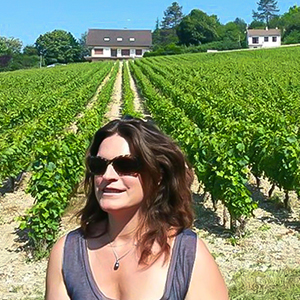
Founder
With a history spanning 12 centuries, the picturesque town of Saint-Emilion, France is a true gem for wine, history, and architecture lovers. Go back in time to the medieval period by visiting the walled cité, and taste some of the country’s most distinctive « grand cru« wines.
No visit to Saint-Emilion would be complete without spending a good amount of time learning about, and tasting, some of the area’s most-exquisite wines. While it may lack the worldwide recognition of the neighbouring Medoc region, which houses prestigious winemakers including Chateau Margaux and Chateau Lafite Rothschild, the Saint-Emilion appellation is recognised as one of the finest in France. The rolling vineyards can be explored by car, foot or bicycle, and offer true rustic appeal.
If many of the Bordeaux region’s winemakers are powerful, enormous domaines, in Saint-Emilion it’s more common to see small family owned-wineries producing small yields, a bit like in the ultra-prestigious Burgundy region. Many of these specialize in grand cru (superior quality) varieties, which requires lower yields produced from more mature vines. Organic and biodynamic wines have become increasingly popular in the area. There are four principal grape varieties used in Saint-Emilion wines, which are always reds: Merlot, Cabernet Franc, Cabernet Sauvignon, and Malbec (the last in smaller quantities).
Wineries of Exception to Prioritise
With more than 800 wine estates operating in Saint-Emilion, how to know which ones to prioritise? This is where your private guide can steer you in the right direction. While it’s perfectly feasible to ask at the tourist office and tour the vineyards yourself by car of group tour in a minivan, electing to work with a private guide will guarantee that you taste the very best the region has to offer. This is particularly true since most wineries in the region offer tastings and tours only on appointment, and are open only on select days during the week.
Some of the most outstanding Saint-Emilion appellation wineries you may visit on your personalised itinerary include Chateau Cheval-Blanc, Clos Fourtet, Chateau Canon, Chateau Ausone, Chateau Beauséjour-Bécot, Chateau Troplong Mondot, Chateau Angelus, and Chateau Pavie. Their grands crus regularly receive top ratings from both local wine standards authorities and from wine magazines such as Decanter. We also have strong existing relationships with many of these extraordinary houses, allowing us to open doors to our clients that aren’t always easily accessible.
Your travel concierge will arrange tastings at the best and most confidential estates in Saint-Emilion, whether you wish to primarily taste outstanding “grand crus” of that particular appellation, or are also interested in expanding your tour to taste other wines produced in the area, from sparkling whites (Crémant de Bordeaux) or Lalande de Pomerol.
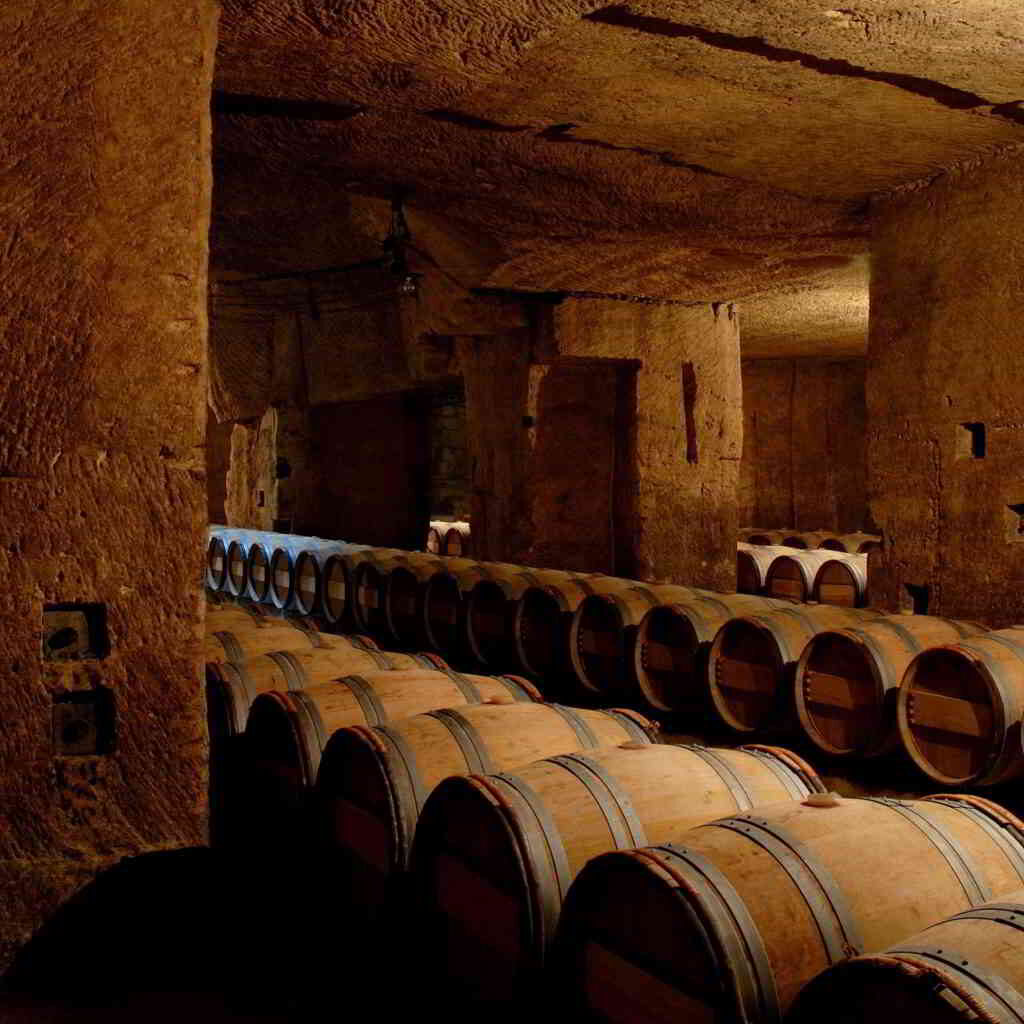
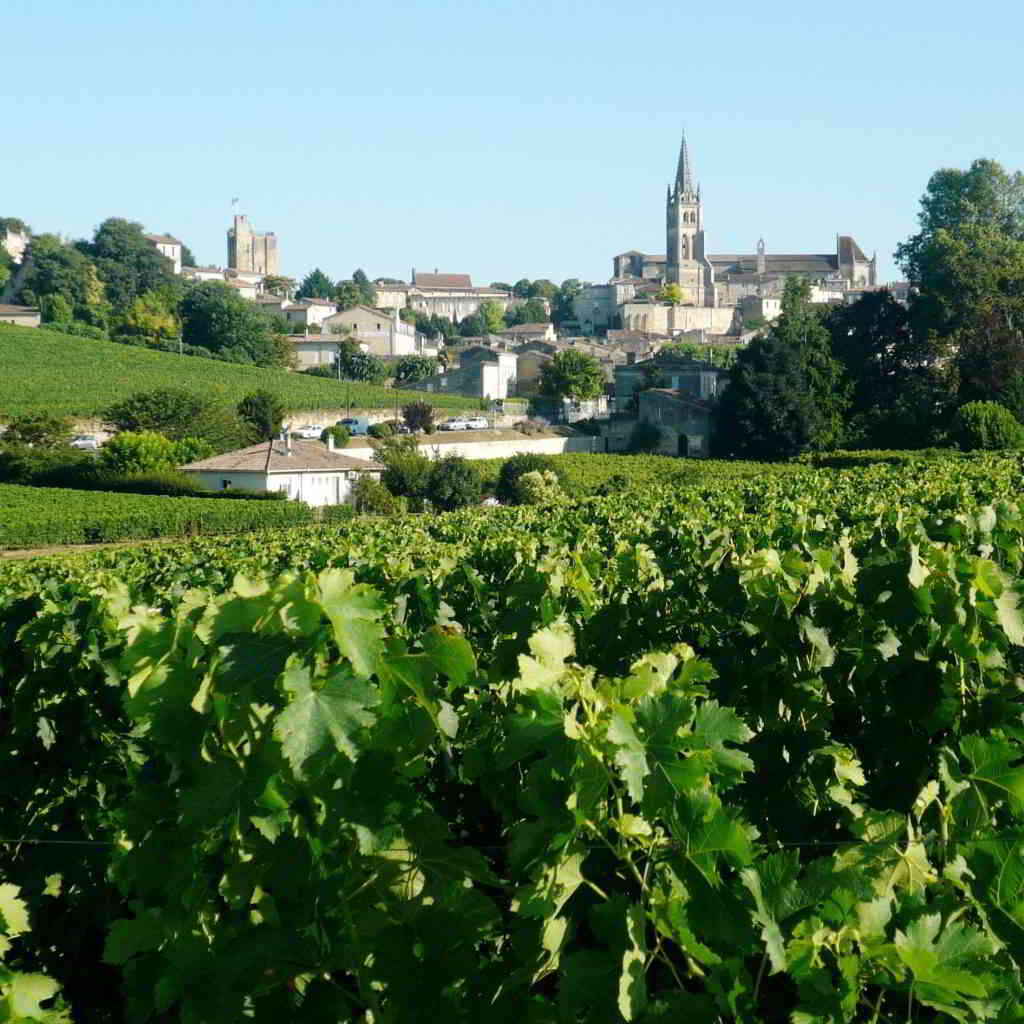
One of the best-preserved medieval towns in France, Saint-Emilion is a UNESCO World Heritage Site whose winding, cobbled streets, stunning centuries-old churches, stone walls and quiet cloisters seem nearly untouched by the noise and commotion of modern life. Only 200 permanent residents now inhabit the walled portion of the town, which is now almost entirely consecrated to tourism. Some 1,000,000 visitors come to the town each year: a remarkable feat for a village plunged in the middle of the southwest countryside.
Even more remarkable? Despite the large numbers of visitors, the town reserves plenty of quiet, mysterious streets, verdant with climbing plants and secret gardens. Especially if you elect to visit in the early spring or autumn, you’ll have more of the city to yourself.
Inspiring Sites to Visit
The entire town is a monument in its own right– perched on a hillside and overlooking the rolling vineyards stretching for kilometres beyond. But a few sites should have star billing on your personalised itinerary. The Megalithic Church and its impressive belltower, underground caves and catacombs are simply breathtaking. The church itself, almost entirely underground and constructed in the 12th century from a single slab of native limestone, is a fragile masterpiece that will make you believe yourself in some epic medieval romance. The adjoining caves are said to have been the home of Saint-Emilion himself, a Breton monk who reputedly came to the town to escape the noise of the world and eventually establish a monastery there. His miraculous acts have become the stuff of numerous legends, now part of the cultural fabric of the city.
Meanwhile, the massive belltower jutting out from above the church is the highest point in Saint-Emilion, and was built between the 12th and 15th centuries. Climbing its 196 steps affords spectacular views over the medieval cité and the greater countryside. This can also be achieved by climbing the impressive Tour du Roy, or King’s Keep. Constructed in the 13th century, it’s steeped in legend and mystery: it’s unclear from historical records who ordered it built, and its purpose is also a puzzle. Whatever its origins and meaning, going to the top offers more gorgeous vistas over the city.
Finally, the Collegiate Church and its cloisters, which once housed one of the region’s most-important monasteries, is also essential. Located right next to the tourist office, the 13th-century Church boasts both Romanesque and Gothic elements. The interior features some beautiful old paintings and decorations, as well as centuries-old graffiti etched into its walls– traces left from residents past.
Whatever your interests, your private guide will design an unforgettable and fascinating circuit through the mythic town– and visits can be interspersed with wine tastings and delicious meals, of course!
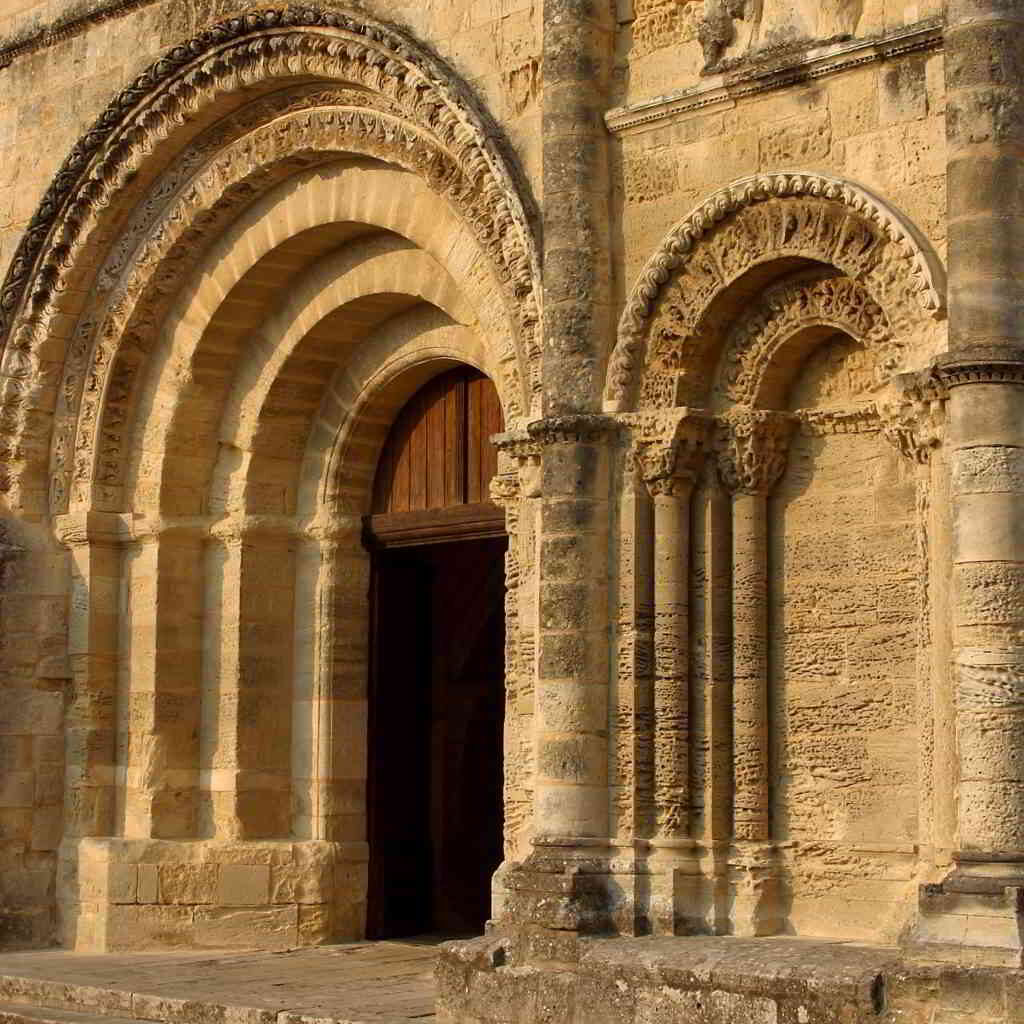
Alongside its wines, Saint-Emilion is also renowned locally for some excellent regional specialities and gastronomic tables. Your private itinerary will include unforgettable gourmet experiences that go well beyond wine tastings (although admittedly, a meal at any fine restaurant in the area will almost always include expert wine pairings with your meal).
The Macarons of Saint-Emilion:
Undoubtedly the most-famous speciality of the old city is the macaron de Saint-Emilion, which was invented by Ursuline nuns in the 17th century, at a monastery whose ruins still remain visible today. Less airy and large then the macarons most gastronomes recognise today, the ones produced from this older traditional recipe have a more distinctive almond/marzipan-like aroma and taste, and are not generally made in different flavours. They can, however, be joined together with chocolate or other delicious fillings. There is only one genuinely authentic macaron maker in St Emilion– claiming to hold the original recipe from the nuns, and run exclusively by women for several generations.
Superb Restaurants (and Places to Stay)
There are some fantastic tables in Saint-Emilion and surrounds– many of which happen to be some of the most luxurious places to stay.
These include the two-star Michelin restaurant, L’Hostellerie de Plaisance, located just next to the signature bell tower at the highest point of the city, and helmed by chef Ronan Kervarec. Offering extraordinary, inventive cuisine with local inflections and an extensive wine list, the restaurant also affords splendid views from its terrace. The 5-star hotel of the same name emblematises pure elegance.
Just nearby, located at the side of a dauntingly steep cobblestone street, is the Logis de la Cadène, a rustic but timelessly elegant inn that houses a 1-star Michelin restaurant of the same name. Chef Alexandre Baumard presides over the creative restaurant here, focused on fresh regional produce and inventive tasting menus.
Other local favorites include the Bistrot des Vignobles, a more relaxed bistrot-style restaurant with a lovely back garden and delicious, constantly-refreshed cuisine. The wine pairings are expert here. Try one of their signature desserts, the Saint-Emilion Brest: A twist on the classic “Paris-Brest” pastry, it’s composed of a Saint-Emilion macaron filled with hazelnut ganache, then topped with canelé -flavoured ice cream and salted butter caramel.
Finally, for a light, casual lunch accompanied by local sparkling white wine and with beautiful views, why not sit in the teeming garden behind the Cloitre des Cordeliers, a former cloister that is now the production site of Crémant de Bordeaux, a delicious sparkling white? You can fill your onsite “picnic basket” (provided by the bar) with delicious fresh baguette, creamy cheeses, patés, tapenade and fruit, and enjoy the view over the ruins of the cloisters while you sip a crisp glass of Crémant.
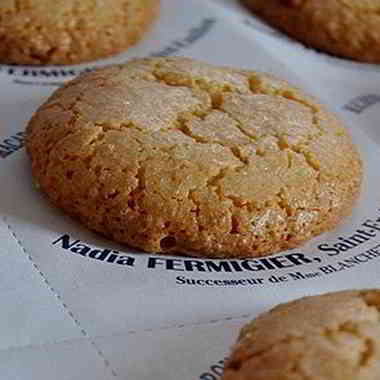
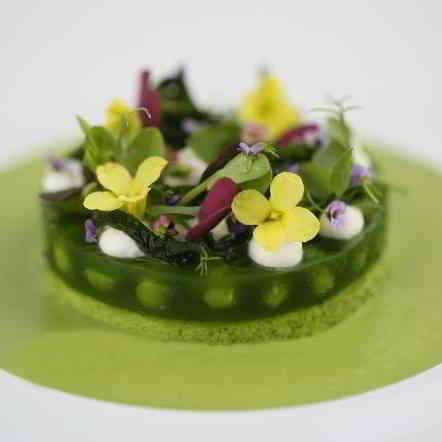
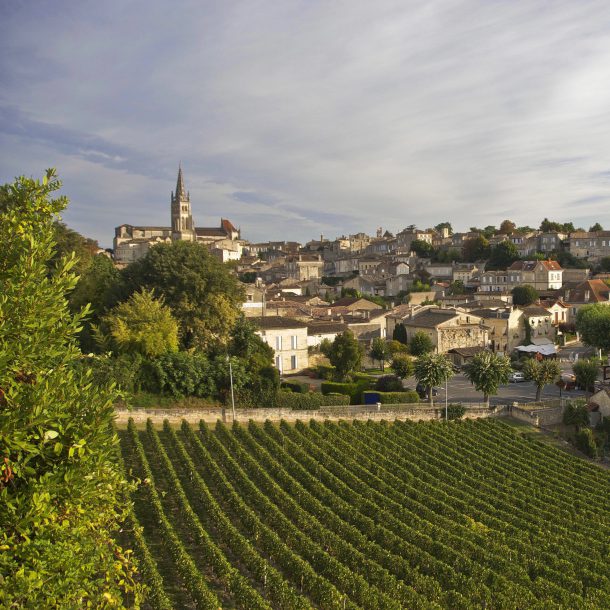
While the vineyards beyond the walled city beckon most visitors for tastings, the town itself is a rich resource for wine. Many producers have cellars and production sites within the walls, where you can taste, tour, and come away with some extraordinary bottles. Your private guide or concierge will help direct you to the best of these, and even help you select wines for your home cellar to bring home.
The Maison du Vin, located right around the corner from the tourist office, is an excellent resource: they stock hundreds of St-Emilion appellation wines onsite, and their expert sommeliers offer both tastings and guidance for your next purchase. Other cellars and wineries of note within the city walls include the Vignobles Galhaud, which offer tastings and tours in the centuries-old cellars below the town, and La Grande Cave de Saint-Emilion, located right near the belltower at 6 rue du clocher.
In short, assuming you haven’t grown tired of tasting wines and exploring the fascinating traditions surrounding their production, there’s plenty to see and do within the walls, once you’ve ventured out to domaines located within the sprawling vineyards beyond. You may just come away a true expert on the difference between a Saint-Emilion grand cru and a “first-class” counterpart…
Did you like the content? Share it now!
We’ve only offered a few examples her of what St Emilion and the entire region around Bordeaux has to offer. If w’e managed to persuade you that it might make the perfect destination for your next luxury getaway to France, get in touch with us. We’ll create an entirely bespoke and personalized itinerary for you– ensuring your holiday is both exceptional and unforgettable.
Did you like the content? Share it now!
To provide the best experiences, we use technologies like cookies to store and/or access device information. Consenting to these technologies allows us to process data such as browsing behavior or unique IDs on this site. Not consenting or withdrawing consent may negatively affect certain features and functions.
